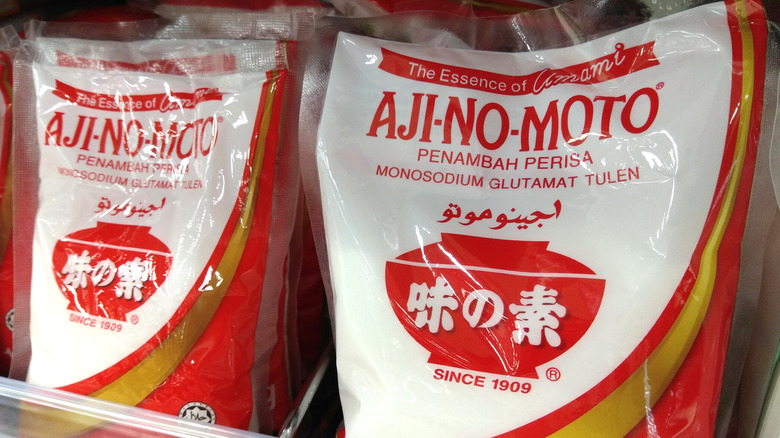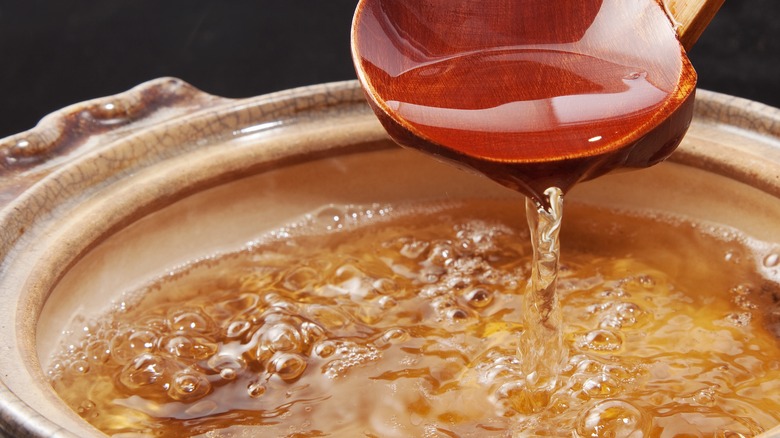It's Time To Put The Biggest Misconception About MSG To Rest
Of all the three-letter collections in the world of gastronomy, MSG is one of the most recognizable. It's an acronym for monosodium glutamate, which has been part of the worldwide culinary vocabulary since 1909, thanks to a man named Kikunae Ikeda, explains Smithsonian Magazine. As the story goes, the Japanese scientist and professor became curious about what made a standard Japanese dashi soup taste so good. The wheels started turning in his science-centric brain, leading to what we now call MSG. But somewhere along the way, about 60 years later, the miracle taste enhancer got a bad reputation. In addition to becoming a pariah in the Asian restaurant industry, the rumor behind its "scarlet letter" designation was actually untrue.
Ikeda's experimentation started by identifying the main ingredient in dashi soup, which was the local Laminaria japonica seaweed. Through a long series of experiments on the seaweed, resulting in the creation of salt-like crystals, a new taste was born — one with a long-reaching influence on how Asian food thereafter was flavored. Ikeda named it "umami," a play on the Japanese word for "delicious."
Americans reportedly brought the seasoning home after World War II, where it enjoyed similar success, according to MSGdish. But the tides turned in the 1960s and '70s when consumers started questioning the presence of additives and chemicals in American food (via Smithsonian Magazine). Somewhere in that awareness shift, MSG got accused of being a chemical food additive. It's high time that myth gets a reality check.
A substance occurring in nature
MSG comes from an amino acid called glutamic acid, a naturally occurring substance, according to the U.S. Food & Drug Administration (FDA). Monosodium glutamate is the sodium salt form of the acid and is present in foods such as tomatoes, cheeses, yeast extracts, and food ingredients including soy extracts and hydrolyzed vegetable proteins. A study review published in the Journal of Nutrition even reveals that glutamate is a primary neurotransmitter in the human brain.
Far from being a manmade chemical, MSG seasoning in use today comes from the fermentation of various items, including starch, sugar beets, and either molasses or sugar cane, per the FDA. Some individuals have associated MSG with varying reactions such as headaches, weakness, tingling in the face, and fluttering heartbeats, notes Mayo Clinic. However, clinical research typically fails to verify a link between the symptoms and MSG, and the FDA designates MSG as GRAS — generally recognized as safe.
To put the MSG controversy in perspective, here's a short list of everyday food items routinely containing MSG, per WebMD: canned soups, taco seasonings, chips, salad dressings, sauces, mayonnaise, ketchup, and lots more. Healthline adds to the list: lunch meats, sausages, pepperoni, frozen pizzas, instant noodles, and fast food from Kentucky Fried Chicken and Chick-fil-A.
Though deemed safe by the FDA, Healthline recommends limiting added MSG intake to 3 grams or less per day. Current daily consumption in the U.S. and U.K. hovers around 0.55 grams.

